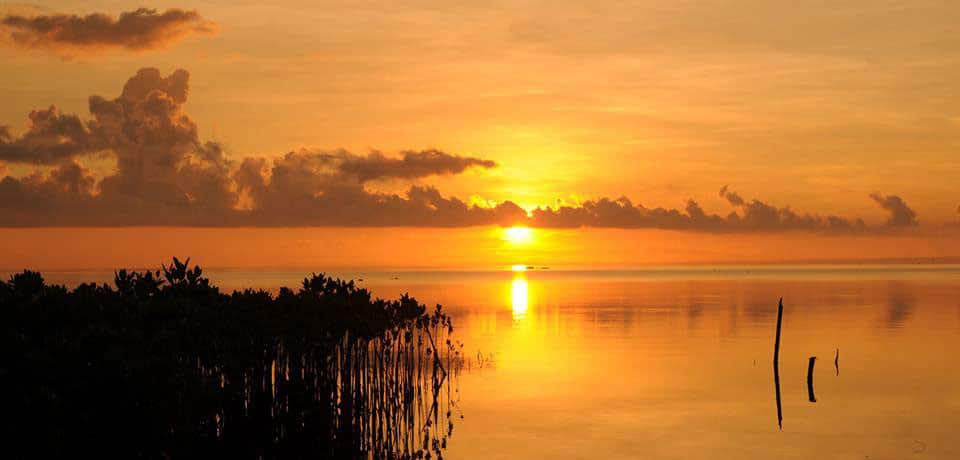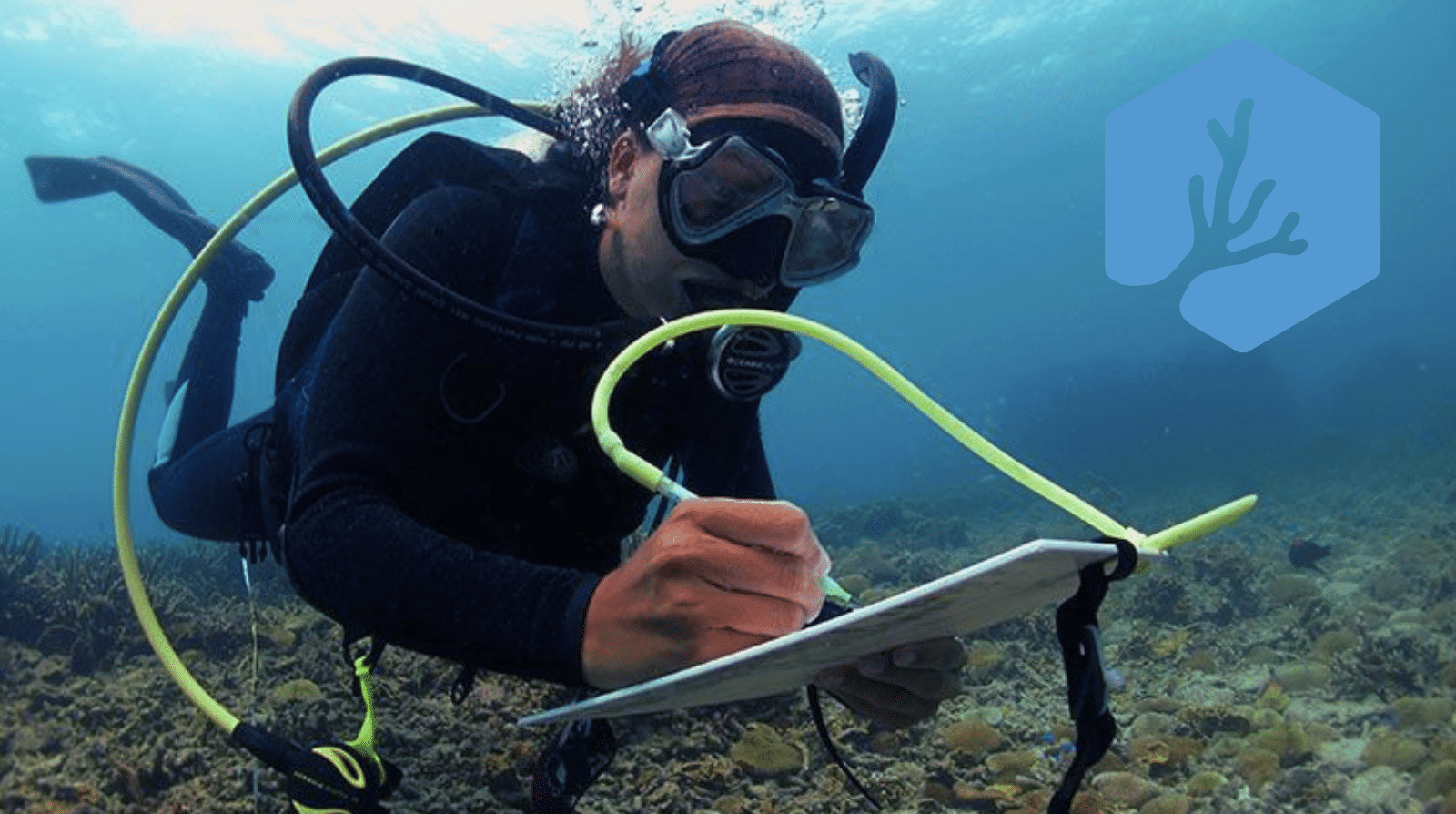Conservation Divers Discover Rare Coral on Koh Tao
Conservation Diver Trainer Pau Urgell recently made a pretty important discovery during an Ecological Monitoring Program survey - a rare species of soft coral that seemed to be making a skeleton. Pau knew that hard corals have tentacles in multiples of six, and soft corrals in multiples of eight, so something was not right when an eight tentacled coral was encrusting over the rocks and clams. Getting back to the office, he tried and tried to identify this strange Octocoral, to no avail, until, with some help from the rest of the team, they discovered it was a very rare species in the genus called Nanipora, which previously has only been observed in one small location in Japan.
Over the next few months, Pau and others worked to get more data on this strange coral, collecting samples for analysis and mapping the range of the colonies that could be found around the EMP line in Hin Wong Bay, Koh Tao. Through that process, another amazing discovery was made, this coral contained zooxanthallae, the symbiotic algae that hard corals use to make their calcium carbonate skeleton.
The results of all these findings have been written up in the Journal of Marine Biodiversity, which you can find here. This goes to show how careful observations, combined with good science, can yield exciting new information. For now, we will continue to enjoy seeing this rare species of coral, knowing that there is only one place other than Koh Tao where it exists.

Fig. 2 Colonies of Nanipora coral. a Close-up lateral view of polyps with view of pinnules. View of skeleton and calyces with polyps retracted. c Edge of laminar growth as viewed through a low magnification microscope showing pores and granular pigmentation. d Magnified view of extracted Symbiodinium (Urgell et al. 2017)
Conservation Diver returns to the Philippines, April 2017
Conservation Divers Rahul Mehrotra and Spencer Arnold returned to the Philippines in 2017 to continue the research and ecological consultancy work from the initial assessment in 2016.
The small and rural municipality of Toboso has historically been a fishing and agriculture driven community for many decades. Recent years have shown heavy declines in fish stocks. As part of broader national incentives and to assess the coastal ecosystem and fishery health, the local NGO, Worldreef Toboso, has been working with the local government to create an MPA and zonation plan for the area.
[su_slider source="media: 400,399,398,397,396,395,394,393" width="260" height="260" speed="1300"]
Conservation Diver was invited to carry out the local assessment and research to promote the local conservation efforts. The 2016 assessment found that though the coral reefs, mangroves and seagrass habitats appeared healthy and abundant in places, the vast majority of fish diversity and adult fish abundance, was absent. Additionally it was found that the presently proposed MPA failed to protect most of the healthy and diverse reef ecosystems, and instead covered sparse and degraded habitats. The full 2016 report can be downloaded here.
This year, Conservation Diver Trainers returned to the area to provide scientific evidence for the proposed extended MPA area, while also conducting further assessments of the local fishery. The 2017 Toboso project concluded with more data collection from both the original and the newly proposed MPA locations yielding some fascinating findings. Additionally, deeper EMP transects were carried out throughout the coastline. These deeper surveys showed that what was left of the adult/larger individuals of the key ecological fish species were to be found at the deeper extent of high-abundance coral reefs. Presumably, the challenges to fisherfolk kept these deeper areas as effective refuges.
A greater focus was applied also to the algal diversity at Toboso in the second week. Though the data analysis for the findings is still very much in its early stages, it is believed that this years work is likely to have added a further 100 or so species to the 400 established thus far. Finally, the trip concluded with a meeting with the Mayor and a number of the governing staff of the nearby municipality of Escalante, with potentially exciting developments for a 2018 expedition.
The next several weeks will be spent analysing the mountain of data collected during the expedition to produce a new, updated report to the highly successful report from 2016.
[su_slider source="media: 410,409,408,407,406,405,404,403,402,401" width="260" height="260" speed="1300"]
Conservation Diver in Toboso, Philippines, July 2016
Toboso is a rural area in the province of Negros Occidental with almost no prior marine habitat usage outside of fishing. In July of 2016, Conservation Diver Trainer Rahul Mehrotra joined the "Worldreef, Toboso" organization to assist in expanding the baseline knowledge of biodiversity in the area and conduct preliminary assessments of the habitats in the vicinity of the MPA.
Much work had already been conducted by Worldreef in initiating and processing the MPA, working closely with the local governmental authorities. Yet, a large number of criteria were still required to maximize the case for the creation of the MPA, and surrounding Marine Reserve.
The job of Rahul, first and foremost, was the establishing of an accurate database of flora and fauna in the area. An assessment and broad management plan of the habitats in the area was carried out according to the methods covered in the Conservation Diver courses.

Much talk had also gone into the economic aspects and opportunities of the MPA and surrounding zonation, including particular work with the Department of Agriculture and other independent groups regarding fisheries management and restocking opportunities. Focus is also being put on attractive species to tourism with what is available in the area, which has proven to be a challenge given the severe over-fishing the region has faced.
After a few days of focus on biodiversity assessment and taxonomic restructuring of the known database, the team at Toboso focused efforts on conducting transect surveys to assess the health and diversity of reefs in the area.
The transect methods were adapted from the Conservation Diver syllabus to address key focal points in the area. These were to identify species key to the 3 main goals of the assessment, ecological value, economic value (fisheries), and potential economic value (tourism).
Substrate surveys indicated that certain key areas show high diversity and relatively high coral cover, for the area, with some places showing over 40% coral coverage. A number of the corals deeper than 3 meters had shown recent signs of bleaching stress, with isolated pockets of bleached and diseased corals, but largely looked healthy. It is likely that the worst of the bleaching to hit these reefs occurred weeks to months prior to these surveys being conducted, and with the start of the cooler rainy season in the area, we hope the remaining corals get some relief from their ordeal.
Invertebrate and Vertebrate surveys looked far less promising, with very little sign of large fish life or diversity. Overfishing in the area over multiple years has led to a severely understocked fishery with only 3 individual fish larger than approx 30cm, being witnessed in over 15 surveys. Thats 3 fish, total. All others are juveniles or small species and diversity is deemed to be lacking.
Invertebrate surveys agreed with findings of the vertebrate surveys in that any organisms with fishery value appear to have been fished to near eradication. Key examples are the Giant Clams and Sea Cucumbers, both of which show severe depletion at all locations. A total of 3 giant clams were witnessed in all surveys, and all were at depths greater than 3 meters. Based on internal discussions, the precise location of these clams will be withheld to promote their survival

To conclude on a positive note, only a single transect saw signs of Crown of Thorns, with 3 being found along a 50 meter line. The current view of the ecosystem is one of possible high diversity and health, but would require strict and immediate measures to be put in place to allow the fisheries to recover. Patrol boats have been acquired for the use of monitoring the MPA area when it comes into effect, which should assist in the enforcement yet to come. The marine environment, and all its ecosystems here at Toboso shows incredible potential but requires a lot of help and restoration to reach that potential.
A glimpse of the past and a look to the future of the coral reefs of Toboso.
The research and conservation carried out at Toboso during this expedition has concluded yielded a report of findings in due course. During the final week of the expedition, a number of key events took place that provided evidence for the dire need for restorative work to be carried out at Toboso, and the possible beginnings of a future regular collaborative effort.Much of the time in the final week had been spent compiling and analysing data on the health, and importantly, location of much of the reefs in the region. This data additionally resulted in a number of key, important records to add to the growing list of species recorded from the region.
During the proposition of the MPA, a number of local and regional authorities demanded a minimum species inventory of 100 species to qualify the region for an MPA. The source of this rather absurd figure was never found, but regardless, the team has since catalogued a total inventory of 3 times the minimum value, reaching well over 300 species, with many more to be recorded.
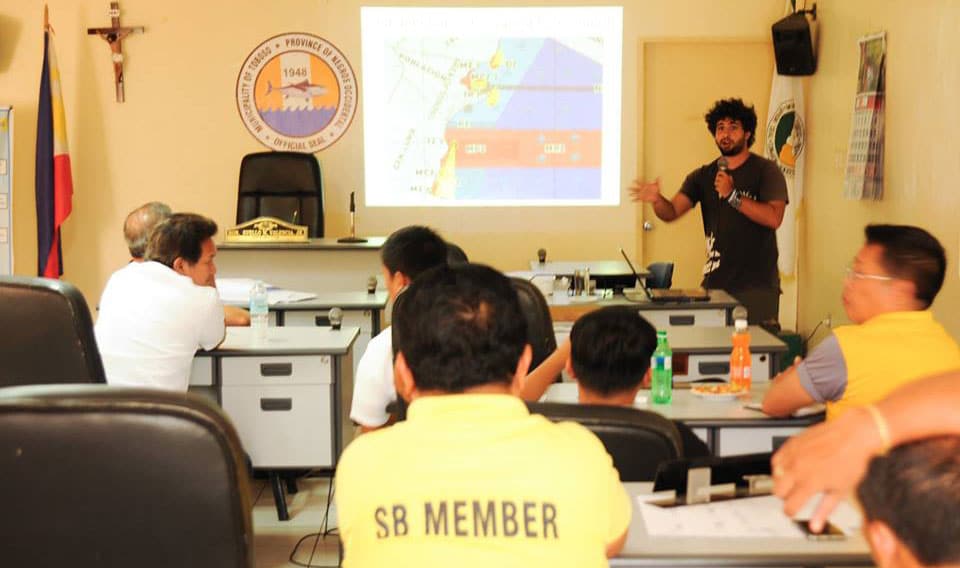
A presentation and meeting with the local municipality and number of stakeholders by the Conservation Diver team was largely deemed to be a resounding success with much discussion and agreement on the need to alter current practices and amend MPA proposition as it currently stands. Full details can be found in the report.
During surveys in the local area, a large fish trap and cage was found showing limited success and arguably more harm than good. This particular trap was found less than 5 meters from the edge of the local coral reef, and represents a common practice in the region. Relative to other methods used in the Philippines, this method has the potential to be far less disruptive, however location and implementation must be reviewed in an area where edible fish stocks have been almost completely depleted. Given the enormous size of the local 'menu', this poses dire consequences for local fisheries.
Finally, 48 hours prior to departure, the team was contacted at dawn about a large sunfish (Mola mola), that had been incidentally caught and had unfortunately perished in the net during attempts to free it. The large oceanic fish has not been seen or landed in Toboso for a number of years, and further hints at the problems of insufficient infrastructure to manage such issues.
The official report is publicly available and will hopefully help to promote tourism activity over fishing in Toboso. A number of difficult steps are outlined, and need to be realized, if the incredible life and potential of Toboso is to be saved.
"As it currently stands, the marine environment at Toboso is in dire need of effective restoration as much of the life has already been lost, and what is left may soon follow. The environmental and economic gains of this restoration could be substantial, should stakeholders work together to capitalize on it."
[su_custom_gallery source="media: 374,386,376,381,382,384,385,380,387,379,378" width="400" height="400"]
Working with Island Livelihoods Institute and Corals Blue in the Maldives, May 2016
In May of 2016, Conservation Diver Trainers Pau Urgell and Kait Harris were invited by the Island Livelihood Institute to come and help with marine conservation projects and education in the Maldives. The team spent several weeks in the Maldives sharing their knowledge of coral reef ecology and coral restoration. The project could not have happened at a more salient time, as coral reef bleaching was very severe during the period.
The first stop for the team was the island of Fainu. Here the team was involved in training local islanders, children, in the techniques of coral reef education and action of Conservation Diver, and also strengthening ties with a local conservation group, Corals Blue. They spent some time teaching children of grades 8-10 about the reefs, and detailing some of the local and global threats facing the reefs the islanders depend upon. The following day they put theory into practice by taking the students on a beach clean-up, and having a competition to see who could collect the most rubbish. In all, over 70 bags of plastic bottles, rope, wrappers and Styrofoam were collected over the space of an hour. After the clean-up, the students learnt a little bit about the Coral Blue gardening project, and why it is so important as a restoration method. For demonstration purposes, they practiced the proper attachment technique using dead coral fragments found on the beach and attaching them to the domes.
Ecological Monitoring Program
Ecological Monitoring Program
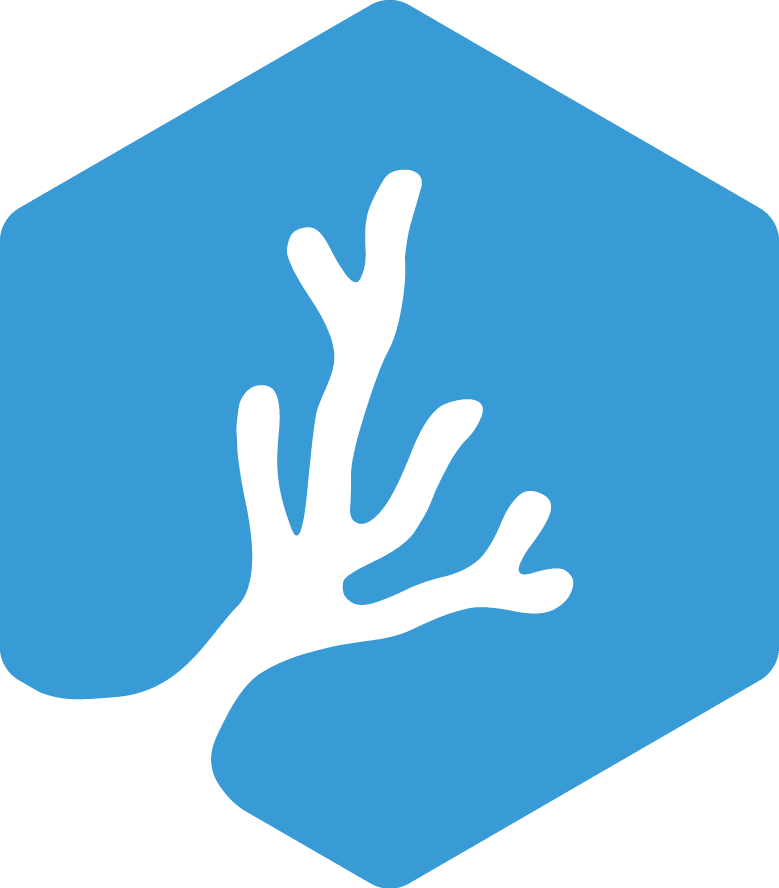
The Ecological Monitoring program is designed to give students an introduction to coral reef ecology and how to view the reef scientifically by assessing key biotic and abiotic reef components. The course teaches students how to use real world scientific sampling and reef survey techniques and certifies them to conduct their own surveys and report data back to the online database. Parameters assessed include fish and invertebrate abundance and biodiversity, substrate cover, coral taxonomy, coral diseases, coral bleaching, and more. This course is a prerequisite for many of the other courses offered by Conservation Diver
Prerequisites
- Be 12 years of age or older
- Be certified as an Advanced diver under a leading diving organization (PADI, SSI, RAID, etc) or an Open Water diver who has satisfactorily completed a buoyancy appraisal with a professional diver
- Demonstrate proper diving ability at an advanced Level and be proficient in buoyancy and self-awareness
Standards
- Understand more about coral reef ecology and threats to coral reefs
- Understand various survey techniques used by reef managers to monitor coral reef ecosystems
- Learn the techniques and diagnostic features for identifying coral reef invertebrates along a permanent transect line
- Learn the techniques and diagnostic features for identifying coral reef fishes and other vertebrates along a permanent transect line
- Learn how to assess substrate types and hard coral coverage/growth forms using the point-intercept technique
- Learn how to assess coral health and bleaching
- Perform EMP surveys in several different areas and input the data into the database
- Complete all 3 course exams
Requirements
- Attend all knowledge development presentations
- Complete the e-Learning or read and complete chapter reviews for chapters 1-8 in the EMP manual
- Enter records into database
- Perform all three surveys (invert., fish, and substrate) at least once
- Perform a ‘full EMP’ at least once
- Enter data onto data sheets or into the online database
Expected course time about 20 hours, minimum of 4 dives
Certification Card
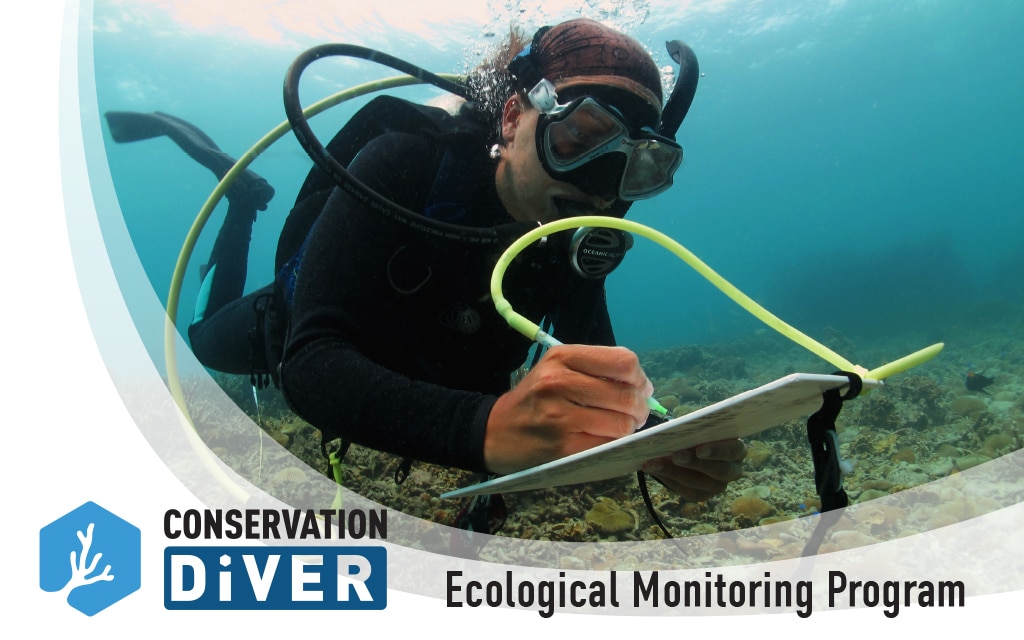
Training Centers
- Hawai'i - Ocean Alliance Project
- Indonesia - Blue Marlin Conservation
- Madagascar - MRCI
- Mallorca - Albatros Diving
- Thailand - ATMEC
- Thailand - Black Turtle Conservation
- Thailand - NHRCP
Related Resources
Note: This course has an accompanying textbook what come in a printed and electronic version available for purchase - Ecological Monitoring Program Manual
Published Papers and reports related to this course
- Population dynamics of corallivores (Drupella and Acanthaster) on coral reefs of Koh Tao, a diving destination in the Gulf of Thailand by Chad M. Scott, Rahul Mehrotra, Margaux Y. Hein, Michelangelo S. Moerland, and Bert W. Hoeksema
- Rare zooxanthellate Nanipora octocoral (Helioporacea) in the Gulf of Thailand by Pau Urgell Plaza, Rahul Mehrotra, Chad M. Scott and James Davis Reimer
- Changes in hard coral abundance and composition on Koh Tao, Thailand, 2006-2014 by Chad M. Scott, Rahul Mehrotra, Madalena Cabral and Sirachai Arunrugstichai
- An update to the list of coral reef fishes from Koh Tao, Gulf of Thailand by Patrick Scaps and Chad M. Scott

